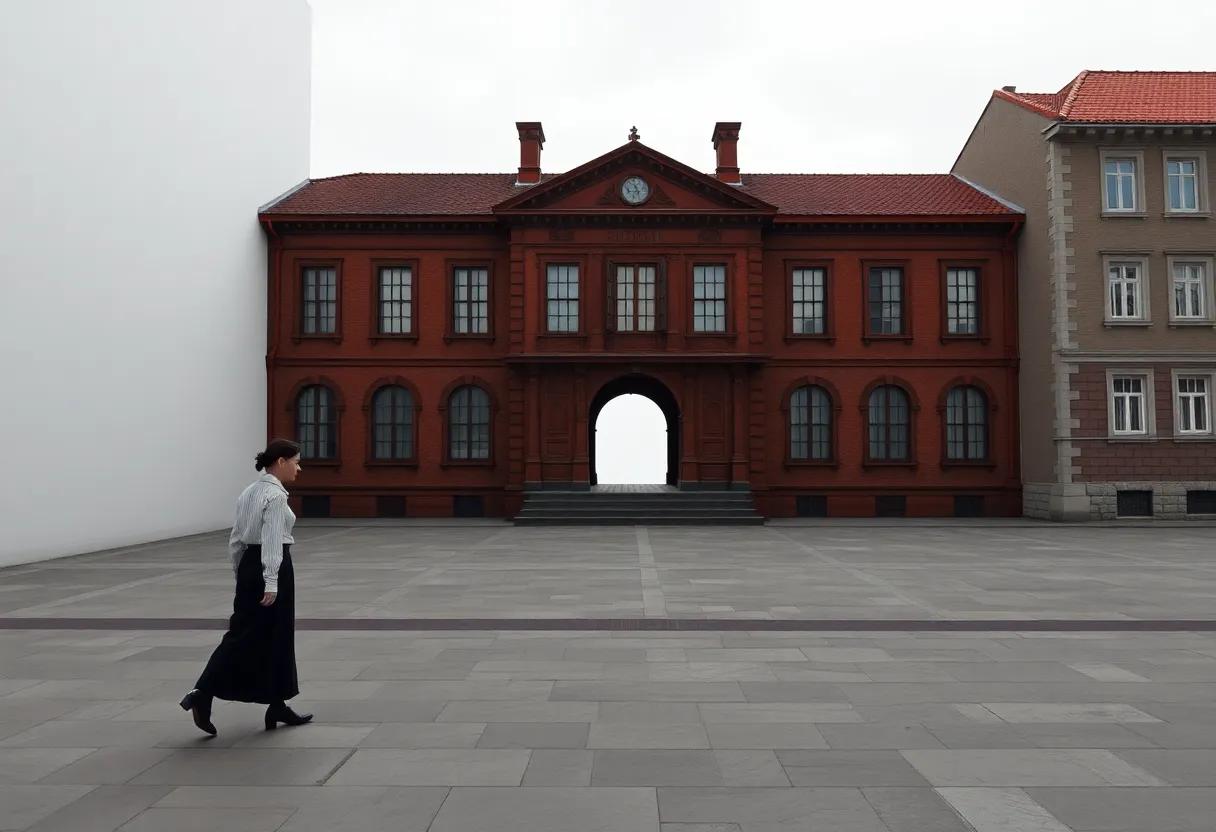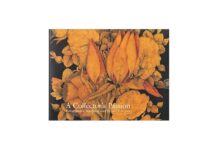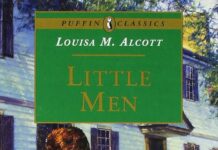In The Girl You Left Behind, Jojo Moyes weaves a poignant narrative that delicately explores the intertwined themes of love and loss across two distinct timelines. With her characteristic blend of past detail and emotional depth, Moyes invites readers on a journey that transcends time, revealing how the past continually shapes the present. This novel not only unpacks the enduring power of memory but also examines the resilience of the human heart when confronted with the echoes of war and personal sacrifice. In this review, we’ll delve into how Moyes crafts a story that is as much about remembrance as it is about moving forward.
Exploring the Dual Timelines and Their Impact on Emotional Depth and Narrative Flow in The Girl You Left Behind

The intertwining of two distinct timelines in The Girl You Left behind creates a rich tapestry of emotional resonance that deepens the reader’s connection to the characters and their journeys. By juxtaposing Sophie’s harrowing experiences during World War I with Liv’s contemporary struggles, Jojo Moyes masterfully illustrates how love, loss, and hope transcend time. the historical timeline draws readers into a world marked by fear and resilience, while the present-day narrative offers a poignant reflection on identity and healing. This dual structure not only amplifies the stakes but also invites readers to ponder the enduring power of memory and the ways past tragedies shape future redemption.
Structurally, the alternating chapters serve as emotional anchors, balancing tension with moments of introspection. This oscillation enhances the narrative flow,preventing stagnation and maintaining engagement through varied pacing. Key elements enhance this dynamic:
- Parallel character development highlighting contrasts between Sophie and Liv’s responses to loss.
- Symbolic motifs like the painting that connects both timelines physically and emotionally.
- Climactic build-up carefully distributed across timelines to maintain suspense and curiosity.
| Timeline | Emotional Focus | Narrative Function |
|---|---|---|
| World war I (Sophie) | Love, sacrifice, trauma | Establishes historical context, personal loss |
| Present Day (Liv) | Hope, healing, identity | Explores legacy impact and resolution |
A Close Look at Moyes’ Portrayal of War-Torn France and Its Resonance in Modern-Day Storytelling
Jojo Moyes masterfully captures the fragmented soul of war-torn France, portraying it not merely as a backdrop but as a living, breathing entity that shapes the lives of her characters. Through rich, immersive descriptions and intimate character moments, she reveals the pervasive sense of loss and upheaval that permeates every street, every shadowed café, and every stolen glance. The remnants of destruction are juxtaposed against the enduring human spirit, creating a poignant tension that echoes the emotional turbulence of the time. This vivid portrayal resonates deeply with readers, inviting them to experiance history through the eyes of those caught in its relentless grip.
Her narrative transcends simple storytelling by reflecting broader themes that remain relevant in modern-day tales of conflict and survival. Moyes weaves a tapestry of:
- Resilience: Characters who persist amid chaos embody the enduring strength of the human will.
- Memory: The struggle to preserve identity and love against the erasing forces of war.
- Loss and Redemption: Exploring how personal sacrifice and trauma forge new paths to hope.
These elements not only enrich the historical setting but also illuminate universal truths that continue to inspire contemporary storytelling,proving that Moyes’ depiction is as much a reflection on humanity as it is indeed on history.
Unpacking the Themes of Love, Loss, and Resilience That Shape the Protagonists’ Journeys
At the heart of The Girl You Left Behind lies a poignant exploration of love’s enduring power, even in the face of searing loss. Moyes intricately weaves the stories of her protagonists, showing how their emotional bonds are tested by the tumultuous tides of history and personal sacrifice. Love here is not just a feeling but a force compelling survival, driving characters to persevere when hope seems most fragile. Through tender memories and heartfelt longing, the narrative invites readers to dwell on how attachments, though frequently enough imperiled, carve out spaces of meaning amidst chaos.
resilience emerges as a quiet but unbreakable thread that binds the characters’ journeys together.This resilience is multidimensional, manifesting through acts both monumental and subtle:
- Emotional fortitude: Enduring grief without surrendering to despair.
- Courage in adversity: Facing the uncertainty of war and occupation with dignified hope.
- Connection to the past: Holding onto memories that provide strength and identity.
| Theme | Impact on Protagonists |
|---|---|
| Love | Shapes choices and nurtures survival instincts |
| Loss | Tests faith and invokes reflection |
| Resilience | Enables growth beyond circumstances |
The balance of these intertwined themes creates a narrative that feels both intimate and universal, reminding us that the human spirit, when anchored by love and strengthened through loss, can transcend even the darkest chapters of history.
The Role of Art as a Symbolic Thread Connecting Past and Present in The Girl You Left Behind

The painting at the heart of the story serves as more then a mere object; it becomes a living connection bridging two very distinct lives separated by time yet intertwined by fate. Through this artwork, Moyes masterfully weaves a narrative that resonates with themes of memory, identity, and enduring love. The canvas embodies the intangible thread that preserves history-its colors and brushstrokes echo the intimate emotions of Sophie in WWI france and Liv in modern-day London,reminding readers how art transcends linguistic and temporal barriers.
- Symbolic Legacy: The painting carries personal histories and untold stories across eras.
- Emotional Continuity: It mirrors the inner turmoil and hopes of its two protagonists.
- Cultural Memory: Art becomes a vessel carrying fragmented pasts into present consciousness.
| Era | Art’s Role | Impact on Character |
|---|---|---|
| World War I | Preservation of identity | Sophie’s resilience and hope |
| Present Day | Unveiling hidden stories | Liv’s self-discovery and connection |
character Development That Brings Both Sophie and Liv’s Struggles and Strengths to Vivid Life

Jojo Moyes crafts Sophie and Liv’s journeys with a razor-sharp fidelity to human complexity, weaving their struggles and strengths into the narrative fabric with exquisite care. Sophie, caught in the turbulence of war-torn france, reveals a fierce resilience masked by the fragility of loss, while Liv, navigating modern-day uncertainties, embodies a quiet courage that confronts emotional scars long buried.Their stories don’t merely coexist; they reverberate across time, illuminating the timeless plight of women grappling with love, sacrifice, and survival.This duality invites readers to explore a spectrum of emotions, where pain and hope entwine seamlessly, crafting characters as deeply flawed as they are inspiring.
- Sophie’s strength: unwavering loyalty tempered by heart-wrenching sacrifice.
- Liv’s battle: reconciling past wounds while forging a path forward.
- Shared themes: love lost, resilience found, and the indomitable will to endure.
to further appreciate their layered personalities, consider how their inner worlds contrast and complement each other across time:
| Aspect | Sophie | Liv |
|---|---|---|
| Emotional Landscape | Haunted by loss,driven by hope | Healing wounds, seeking peace |
| Personal Strength | Bold defiance in the face of war | Resilience in quiet endurance |
| Core Struggle | Protecting legacy and love | Navigating loss and identity |
how Moyes Balances Historical Detail with Contemporary Issues to Engage a Diverse Readership

Jojo Moyes masterfully intertwines the rich tapestry of early 20th-century history with the pulse of modern-day dilemmas, creating a narrative that resonates across generations. By delving deep into the intricacies of World War I’s aftermath and the socio-political upheavals of the time, she paints a vivid backdrop that grounds her characters’ emotional journeys. This meticulous attention to historical detail offers readers an immersive experience,allowing them to appreciate the sacrifices and resilience of a bygone era. Yet, Moyes doesn’t stop there; her portrayal of contemporary characters wrestling with love, trust, and loss mirrors the timeless nature of human relationships, ensuring relevance for today’s audience.
Her storytelling brilliance lies in balancing these elements through:
- Parallel narratives that link past and present, highlighting how history echoes in modern lives.
- Complex character development that portrays universal themes through unique personal struggles.
- Subtle social commentary woven seamlessly into character interactions and plotlines.
| Historical Elements | Contemporary Reflections |
|---|---|
| Post-war trauma and loss | Modern emotional healing and reconciliation |
| Class and cultural divide | Issues of identity and social belonging |
| Letters as a mode of connection | digital dialogue and emotional distance |
This duality not only enriches the storytelling but also invites readers from diverse backgrounds to find personal meaning in the narrative, bridging the gap between history and the present-day human condition.
The Power of Emotional Authenticity and Subtlety in Dialogues and Inner Monologues
The emotional landscape in The Girl You Left Behind thrives on its subtle portrayals of feeling, where words are often unspoken but deeply felt. Moyes crafts her dialogues with a delicate balance, allowing silences and half-glances to speak as powerfully as the characters’ verbal exchanges. This restraint not only respects the complexity of human emotion but also invites readers to immerse themselves more fully in the unsaid tensions and tender moments. By weaving inner monologues that gently unravel the characters’ vulnerabilities, Moyes creates an intimate connection, making every hesitance and fleeting joy resonate authentically.
Such emotional authenticity is achieved through careful attention to nuance, reflected in moments that might seem understated yet carry immense weight. Consider the following elements that Moyes employs to enrich her narrative’s emotional depth:
- Subtle shifts in tone: Conversations fluctuate naturally between hope, regret, and longing without heavy-handed exposition.
- Layered inner thoughts: Characters’ mental reflections reveal fears and desires that contrast with their outward composure.
- Symbolic gestures: Gestures like a hesitant touch or a lingering look serve as emotional punctuation beyond words.
| Emotional Technique | Effect on Reader |
|---|---|
| minimalistic Dialogue | Invites readers to read between the lines |
| Introspective Monologues | Deepens character empathy |
| Nonverbal Cues | Enhances realism and subtle tension |
Literary Devices and Narrative Techniques That Enhance the Book’s Poignant Atmosphere
Jojo Moyes masterfully employs a blend of symbolism and juxtaposition to deepen the emotional resonance throughout the novel.The recurring image of the portrait acts as a poignant symbol of memory and loss, bridging the past with the present in a tangible way. By placing the wartime narrative alongside a contemporary love story, Moyes creates a striking contrast that highlights resilience amidst despair. This technique not only enriches the storytelling but also invites readers to reflect on the enduring impact of love and the shadows cast by war.
The novel’s narrative structure, shifting between timelines, is enhanced by Moyes’ use of intimate free indirect discourse, allowing readers direct access to the characters’ innermost thoughts without breaking the flow.This subtle technique fosters a deep emotional connection, revealing the complexities of grief and hope. Additionally,the employment of foreshadowing and metaphoric language intricately weaves a tapestry of tension and tenderness. The following table outlines some key devices and their effects within the story:
| Literary Device | Purpose | Effect on mood |
|---|---|---|
| Symbolism | Portrait as memory | Elicits nostalgia and sorrow |
| Juxtaposition | Past vs. Present | Highlights resilience and loss |
| Free Indirect Discourse | Inner thoughts | Creates intimacy and empathy |
| Foreshadowing | Hints future events | Builds anticipation and tension |
| Metaphoric Language | Evokes emotions | Deepens poignancy and beauty |
Why The Girl You Left Behind Appeals to Readers Seeking Thoughtful Romance and Historical Fiction
Jojo Moyes masterfully intertwines romance and history, creating a narrative that resonates with readers hungry for depth and emotional authenticity. this novel gracefully captures the turmoil of two eras,weaving the fragility of love amidst the devastation of World War I with a compelling contemporary storyline. The dual timelines allow readers to explore the enduring impact of love and loss over time, a theme that deepens the connection to the characters and their struggles. The Girl You Left Behind appeals not just for its romantic elements but also for its vivid portrayal of resilience in the face of historical upheaval.
- emotional Complexity: Characters are layered and flawed, offering a genuine exploration of human relationships beyond clichés.
- Historical Detail: Rich, immersive settings provide a textured backdrop that vividly brings past and present to life.
- Thought-Provoking Themes: Explores sacrifice, memory, and the enduring power of art and love through time.
The novel’s balance of heartfelt emotion and historical richness invites readers into a reflective experience-one that questions how much of our past shapes our present selves. The way Moyes connects two women separated by decades yet bonded by loss and hope speaks to anyone interested in stories that challenge the boundaries between time, memory, and love. This makes it an exceptional read for those who appreciate romance that’s as thoughtful as it is poignant.
Recommended Reads for Fans Who Enjoy the Intricacies of Love Across Time and Conflicted Histories
Delve into emotional tapestries woven through decades with stories that masterfully explore the challenges and triumphs of love tested by time and circumstance. These novels, much like The Girl you Left Behind, move beyond simple romance to reveal the resilience of the human heart amid the shadows of war, loss, and societal upheaval. Each book invites readers to step into worlds where history is more than a backdrop – it’s a living, breathing force that shapes and sometimes fractures relationships in the most poignant ways.
For those seeking narratives rich with layered histories and complex emotional landscapes,consider the following works.these selections echo the themes of love’s endurance and the cost of survival through upheavals past and present. Timeless love, conflicted loyalties, and the imperative to remember pulse at the core of each story, creating a mosaic of passion and pain that stays with the reader long after the final page.
- The Nightingale by Kristin Hannah: Sisterhood and sacrifice during WWII illuminate love’s fierce grit.
- Before We Were Strangers by Renée Carlino: Fate and second chances intertwine amidst memories of a shared past.
- The Light Between Oceans by M.L.Stedman: Love and moral dilemmas collide on a remote Australian island.
- all the Light We Cannot See by Anthony Doerr: Two souls connected through the chaos of war in Nazi-occupied France.
| Book | Setting | core Theme |
|---|---|---|
| The Nightingale | France, WWII | Survival & Sacrifice |
| Before We Were Strangers | New York City | Reunion & Forgiveness |
| The Light Between Oceans | Australian Coast | Love & Morality |
| All the Light we Cannot See | Occupied France | Connection & Hope |
A Reflection on the Book’s Reception and Its Place Within Moyes’ Broader Body of Work
Jojo Moyes’ The Girl You Left Behind was met with a warm, reflective embrace from both critics and readers alike, solidifying her reputation as a poignant storyteller who deftly explores the complexities of love and resilience amid hardship. Unlike her more contemporary settings, this novel’s historical backdrop added a rich layer of emotional gravity, encouraging readers to ponder the persistence of memory and identity across time. Many praised Moyes for weaving a dual narrative that seamlessly connected past and present, creating a tapestry of human experience that resonated deeply. Common highlights in reviews included:
- The evocative portrayal of war-torn Europe and its aftermath
- The authentic depiction of personal and societal loss
- The nuanced representation of female strength and vulnerability
- The lyrical prose that balanced melancholy with hope
Within the broader scope of Moyes’ literary canon,this work occupies a distinct yet complementary position. Compared to her internationally acclaimed titles such as Me Before you and After You, which dwell on intimate relationships framed by modern dilemmas, The Girl you Left Behind stands out due to its historical depth and layered narrative structure.The following table illustrates how this novel aligns and contrasts with key themes recurring in Moyes’ oeuvre:
| Aspect | The Girl You Left Behind | Typical Moyes Novels |
|---|---|---|
| Timeframe | early 20th century / Post-WWI | Contemporary 21st century |
| Main Theme | Love, Memory, Loss | Love, Self-Discovery, Healing |
| Narrative Style | Dual timeline with historical lens | single or interlinked character-focused arcs |
| Emotional Tone | Reflective and bittersweet | Heartfelt and uplifting |
Thoughtful Gift Ideas and Reading contexts to enhance Appreciation for This Moving Tale
When selecting the perfect gift to accompany a reading of The Girl You Left Behind, consider items that echo the novel’s emotional layers and historical depth. A beautifully bound journal invites the recipient to reflect on their own experiences of love and loss, much like the characters do. Pairing the book with a vintage-style locket or a piece of delicate jewelry subtly evokes the early 20th-century setting, enhancing the tactile connection to the story’s poignant era. For those who appreciate sensory immersion, a thoughtfully chosen scent-perhaps a lavender or rose-infused candle-can transform reading sessions into moments of serene contemplation, mirroring the novel’s bittersweet tone.
Curating the right surroundings enriches the reader’s journey through Moyes’ intertwined narratives.Ideal reading contexts include cozy nooks with soft lighting or quiet cafés where the hum of life blends with the book’s reflective mood. For group discussions or book clubs, setting the scene with themed refreshments-tea and delicate pastries, for instance-can foster a shared sense of intimacy and emotional exchange. Below is a simple guide to pairing reading environments and gift ideas that complement the novel’s themes:
| Reading Atmosphere | Complementary Gift Idea | Purpose |
|---|---|---|
| Quiet home nook with soft blanket | Hand-crafted journal | Encourages personal reflection |
| Sunlit café corner | Vintage-style locket | Invokes historical connection |
| Group book club meeting | Themed tea and pastries | Fosters shared emotional experience |
| Evening reading by candlelight | Lavender-scented candle | Sets contemplative mood |
About Jojo Moyes The Author Crafting Compassionate Stories That Connect Hearts Across Generations
Jojo Moyes possesses a remarkable ability to breathe life into her characters, weaving intricate tales that resonate deeply with readers of all ages. Her storytelling transcends mere plot, delving into the emotional cores that bind people across time and circumstance. By exploring themes of love, sacrifice, and resilience, she invites audiences to experience the nuances of human connection through richly drawn relationships and vivid historical settings. Moyes’ narratives often spotlight the delicate balance between personal ambition and selflessness, creating a tapestry where compassion is the thread that holds everything together.
- Timeless empathy: Crafting characters whose struggles and triumphs feel intimate and universal.
- Intergenerational bridges: Linking past and present perspectives to highlight enduring human emotions.
- Historical depth: Seamlessly integrating real-world events with personal journeys to intensify emotional impact.
| Quality | Effect in Storytelling |
|---|---|
| Authenticity | Engages readers by portraying relatable emotions and scenarios |
| Emotional layering | Creates multi-dimensional characters who evolve naturally |
| Historical context | Enriches narratives, adding realism and depth |
In peeling back the layers of history, memory, and emotion, The Girl You Left Behind invites readers to contemplate the fragile threads that bind love and loss across time. Jojo Moyes weaves a narrative that is as much about the enduring power of connection as it is about the scars left behind by war and separation. Whether drawn to its intricate storytelling or its tender humanity, this novel lingers long after the final page, reminding us that some stories are never truly finished-they simply wait to be rediscovered.








